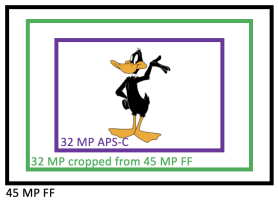I'm very curious about how the spectrum has changed over the years. When I bought my first camera, an IXUS 400, in 2003 there was generally speaking a progression:
- No camera
- Disposable cameras
- Point & shoot
- APS-C film cameras
- 135 film cameras
- The very first digital SLRs
- Medium format cameras
A few years later, with, what in the US was called 'rebel', cameras being introduced:
- No camera
- point & shoot
- 'rebel' camers
- 135 film cameras
- Digital SLRs
- Medium format
Nowadays phones seem to have taken over the 'no camera' and 'p&s' group and I bet a lot of the 'rebel' as well. What I'd really like to know is what people who want an ILC right now are thinking when they go shopping. How do they decide between SLRs and mirrorless? Price? Size/weight? The amount of kickbacks the salesperson gets?
@neuroanatomist is fond of showing how strong SLR sales keep being, so there's something that keeps people buying them over things like the M series.
I know my father will buy the
Olympus OM system body that's on sale or comes with free garbage he thinks he'll use. Arguments like "that's the exact same frame for both bodies, but this one has an accelerometer to automatically rotate your pictures, the other doesn't, for €30 more" fall on deaf ears. But lenses get researched very heavily

The rest of the extended family is pretty much phone-only nowadays. Same for the neighbours, except for the vintage lens collector, but he has 2 kids under 5 now, so not much time for hobbies. The friends circle 'suffers' from the same small kids situation and use mostly their phones, but few of them bought a 'rebel' for their honeymoon and sporadically use it. My former coworkers in the concert industry like action cams, since you can strap them on and use them handsfree. Showing scale and rigging details is much easier on video.
Does anyone here have direct contact with people who are planning to buy their first ILC? What are their reasons for landing on an ILC instead of a bridge camera or phone. And what do they think the deciding factors will be for picking the brand/model/kit?

